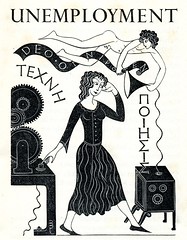2011 was a bad year for unemployment and underemployment and, if the latest Labour Market Statistics are any guide, 2012 looks like being at least as bad. These statistics, which mainly cover the three months to end January 2012, show that:
Unemployment was 2.67 million, up 28,000 over the quarter and 148,000 over the past year. The unemployment rate was 8.4% of the economically active population, up 0.1% on the quarter and at a level which was last exceeded in October 1995 (when John Major was Prime Minister).
Unemployment amongst JSA claimants was 1.61 million in February, up 7,200 on the previous month and 162,000 on the previous year. This left the claimant rate at 5%, unchanged from January but up 0.5% on the previous year.
Youth unemployment was 1.04 million, up 16,000 over the three months to end January and equivalent to 22.5% of economically active 16-24 year olds. However, separate figures showed that the unemployment rate for black youth has been rising at almost twice that for white youth and that unemployment amongst young black men has risen from 28.8% to 55.9% in the past three years.
Underemployment also increased with the number of people working part-time because they couldn’t find full-time jobs up 110,000 to 1.3 million, the highest figure since comparable records began in 1992.
On the slightly less negative side, there was a fall in long-term unemployment - by 12,000 in the number of those unemployed for over a year and by 25,000 in those unemployed for over two years. However this still left 855,000 in the former category and 405,000 in the latter. There was also a fall in the economically inactive rate for 16-64 year olds not working but not included in the unemployment figures. Numbers in this group fell by 27,000 to 9.3 million, giving an inactivity rate of 23.1%. However, the fall was largely due to the effects of a government campaign which contributed to cutting the number of people in the long-term sick category by 67,000 to 2.09 million. In addition to this, the number of job vacancies increased by 15,000 to 473,000 but this still left an average of 5.6 unemployed people chasing every vacancy.
Unfortunately these crumbs of good news appear unlikely to presage a downturn in unemployment, as the economy is still flat-lining, consumer spending and business investment are at historically low levels, companies are still going bust and the recent budget did little to change the situation. The public sector, which cut 270,000 jobs last year, is also continuing to make cutbacks and recent Office for Budget Responsibility projections indicate that a total of 700,000 jobs will have gone by 2015 and 880,000 by 2017. There is also likely to be a post-Olympics jobs cull in certain sectors, including in Balfour Beatty where an estimated 1,500 jobs are believed to be at risk.
Richard Lynch is a Dudden Hill resident. He is a retired Unite the Union official and currently conducts voluntary work on employment rights for the Brent Community Law Centre. He also acts as an accompanying representative for the GMB union.



















